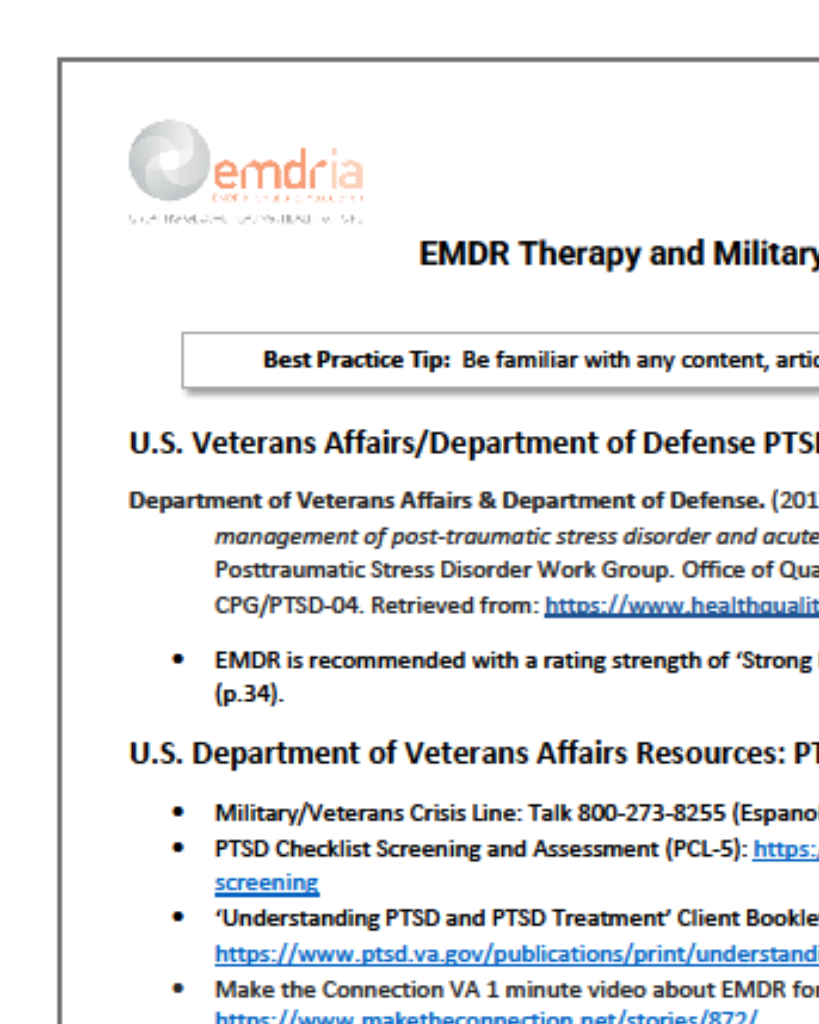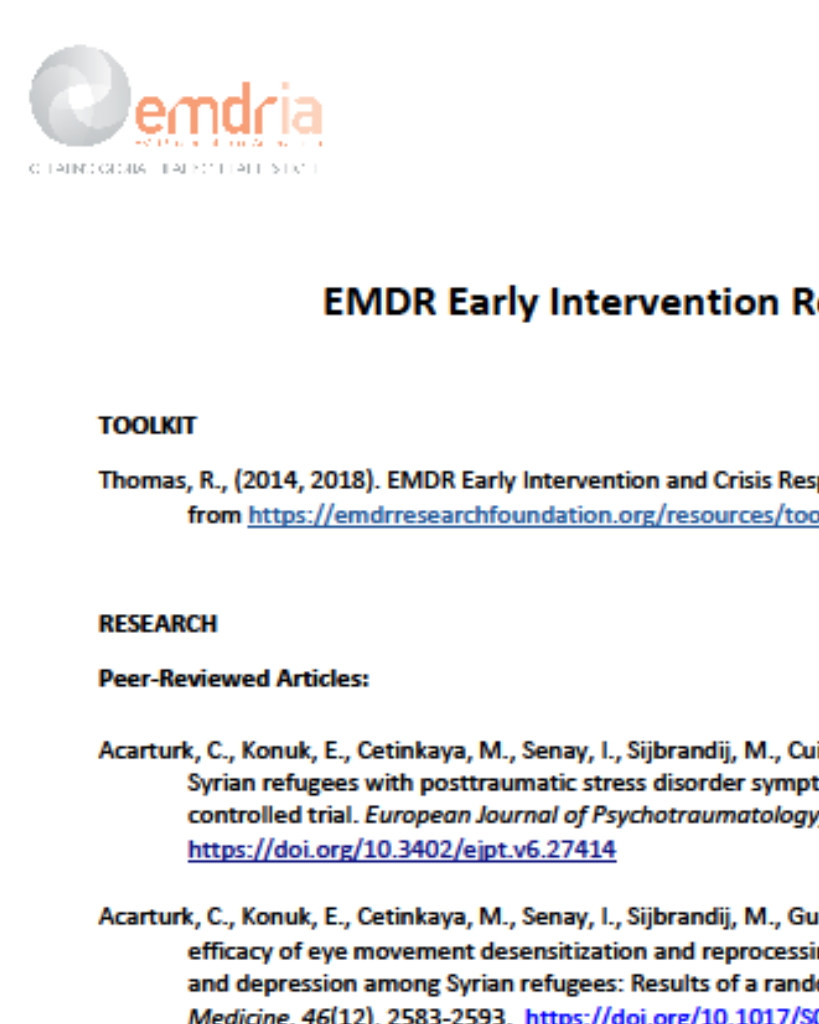A randomized trial of virtual reality eye movement desensitization and reprocessing therapy for major depressive disorder with childhood trauma: A 3-month follow-up study
This study examined the utilization of VR-EMDR in treating major depressive disorder with childhood trauma, monitoring depression and trauma symptoms.
Article Abstract
“Objective: Eye movement desensitization and reprocessing therapy (EMDR) is effective in treating major depressive disorder (MDD) with childhood trauma, and virtual reality (VR) can further extend its application form. However, the utilization of VR-EMDR in treating MDD with childhood trauma is still in its infancy, and whether it can improve depressive symptoms and traumatic experience remains unknown.
Method: Seventy-two MDD patients were randomly allocated to the intervention group and the wait-list control group on a 1:1 basis. The intervention group received 12-session VR-EMDR, while another group received no intervention. We used Patient Health Questionnaire–9 (PHQ-9) and Hamilton Depression Rating Scale–24 Version (24-HDRS) to assess the patient’s subjective and objective depressive symptoms, the Posttraumatic Stress Disorder Check List–Civilian (PCL-C) to assess the patient’s traumatic experience, the Massachusetts General Hospital Cognitive and Physical Functioning Questionnaire, and the MATRICS Consensus Cognitive Battery to assess the patient’s subjective and objective cognitive performance.
Results: After VR-EMDR, the linear mixed model revealed significantly lower scores in PHQ-9, 24-HDRS total and factor score (including anxiety/somatization, weight, and block), Posttraumatic Stress Disorder Check List–Civilian, and Massachusetts General Hospital Cognitive and Physical Functioning Questionnaire and significantly higher scores in information processing speed, attention/alertness, and working memory in the intervention group (p < .05). Improvements can be maintained in the 3-month follow-up, except for 24-HDRS anxiety/somatization factor score, which showed significantly higher scores in the 3-month follow-up compared with postintervention (p < .05).
Conclusions: VR-EMDR is effective in improving depressive symptoms, traumatic experience, and cognitive performance in MDD with childhood trauma. Part of the effects can be maintained 3 months after the intervention.
Impact Statement
Eye movement desensitization and reprocessing therapy (EMDR) is considered one of the trauma-focused psychotherapies for treating major depressive disorder with childhood trauma. Taking advantage of virtual reality in the modern age to promote the use of EMDR becomes a new trend. Virtual Reality EMDR is effective in improving depressive symptoms, traumatic experience, and cognitive performance in major depressive disorder patients with childhood trauma, and these effects can be maintained for at least 3 months.”
—Description from publisher
Article Access
Purchase/Subscription Required
Yan, S., Zhong, S., Lyu, S., Lai, S., Zhang, Y., Luo, Y., Ran, H., Duan, M., & Jia, Y. (2025). A randomized trial of virtual reality eye movement desensitization and reprocessing therapy for major depressive disorder with childhood trauma: A 3-month follow-up study. Psychological Trauma: Theory, Research, Practice, and Policy. https://psycnet.apa.org/doi/10.1037/tra0001830
Date
January 1, 2025
Creator(s)
Shuya Yan, Shuming Zhong, Sihui Lyu
Contributor(s)
Shunkai Lai, Yiliang Zhang, Yange Luo, Hanglin Ran, Manyign Duan, Yanbin Jia
Topics
Childhood Trauma, Depression
Practice & Methods
Comparative Studies
Publisher
American Psychological Association
Rights
Copyright © 2025, American Psychological Association
APA Citation
Yan, S., Zhong, S., Lyu, S., Lai, S., Zhang, Y., Luo, Y., Ran, H., Duan, M., & Jia, Y. (2025). A randomized trial of virtual reality eye movement desensitization and reprocessing therapy for major depressive disorder with childhood trauma: A 3-month follow-up study. Psychological Trauma: Theory, Research, Practice, and Policy. https://psycnet.apa.org/doi/10.1037/tra0001830
Audience
EMDR Therapists
Language
English
Content Type
Article, Peer-Reviewed, RCT
Access Type
External Resource





